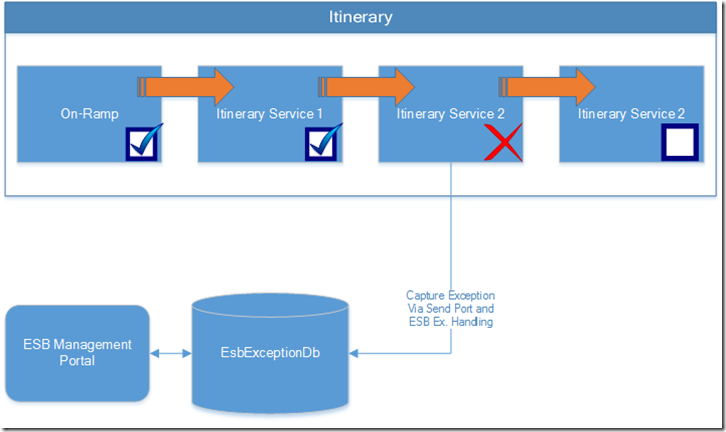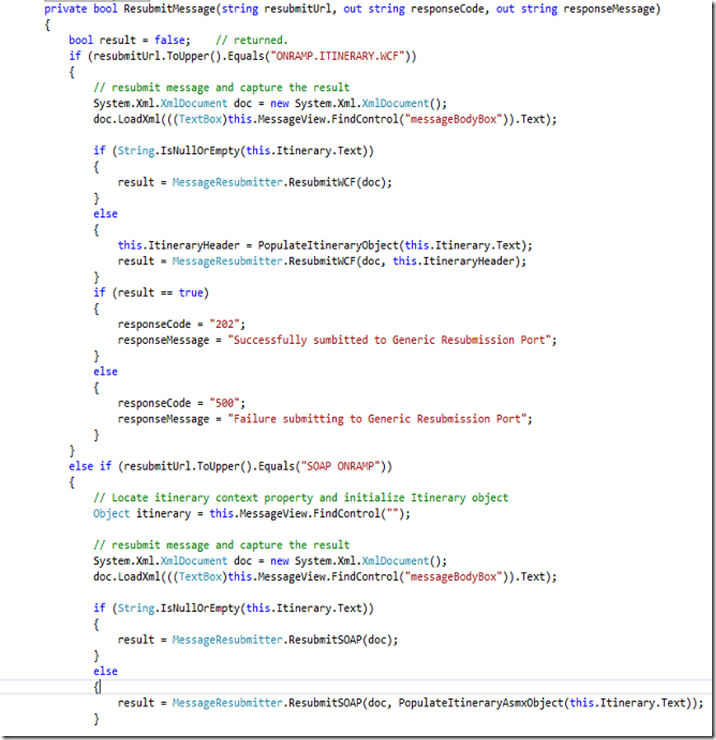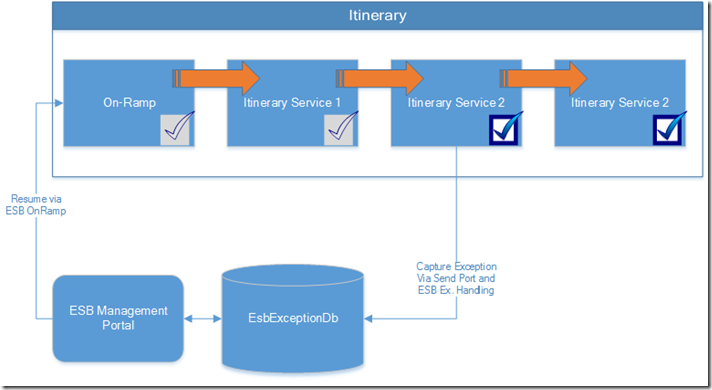In my experience, the two most commonly used components of the ESB Toolkit are the Management Portal and Itineraries. First thing I must remind everyone of is that the Management Portal is a SAMPLE application. This means it is not production readybut you do have all of the source code. If you want the functionality the portal provides, I recommend you extract the code into your organization’s source control system, and own the solution going forward. I’ll cover my list of “things you must do to make the portal production ready” in another post.
Now to the main event. When using Itinerary-based processing for your BizTalk solutions, you get some great features out of the box, with little to no effort. One of these is the ability to continue processing an instance of an itinerary from the step at which it failed. First, you must have the ESB Exception Management solution deployed. This provides the EsbExceptionDb repository for storing exception and instance data of failed messages, as well as an out-of-the-box Send Port for populating the database when failures occur. Second, you must both enable Failed Message Routing on all itinerary-used Send and Receive Ports and use the prescribed ESB exception handling in all itinerary-used orchestrations.
Once these steps are completed, you will see failed itinerary instances in the ESB Management Portal, along with the Itinerary XML in the message context.
At this point, enough information is available to submit the failed message to the out-of-the-box ESB On-Rampsyou just have to make a small tweak to the ESB Management Portal source code. The following is a snippet of code from the out-of-box MessageViewer.ascx.cs file, located in the ESB.Portal\Faults folder. The ResubmitMessage method is where all the magic happens.
MessageViewer.ascx.cs (Original)
As you can see, depending on what the user does, the message could be resubmitted via a SOAP or WCF endpoint. Both use a helper library called MessageResubmitter. Looking at that library, you can see that both resubmission options do not include the Itinerary in the service request, even though it is available!
MessageResubmitter.cs (Original)
These services can each handle the itinerary being includedwe just have to add it to this client proxy code. here is what it looks like post-modification:
MessageViewer.ascx.cs (Modified)
MessageResubmitter.cs (Modified)
What is great is to understand that this will automatically start processing the itinerary from the point at which it failed. Looking at an example Itinerary XML attached to a failed instance, you can see that the next step in the itinerary is already set, since the Itinerary engine manages this as it processes. The <ServiceInstance> tag identifies the next itinerary step to be executed, and you can see the state of both the step and the overall Itinerary are both “Pending”.
Once submitted, the remaining steps of the itinerary are executed, while any steps that executed successfully the previous time are not re-executed.
Such a simple change, but adds compelling exception handling capabilities. The solution described above is a Manual Intervention scenario. If you needed an automated mechanism for resubmission, simply adding a component, such as an orchestration, which processes exception messages before they reach the ALL.Exceptions Send Port, would allow you to configure automated resume with whatever retries, delays you needed.
Nextleveraging out of the box Itinerary BAM tracking with out of the box ESB exception information to produce a full view into itinerary processing
Ciao,
Dan







